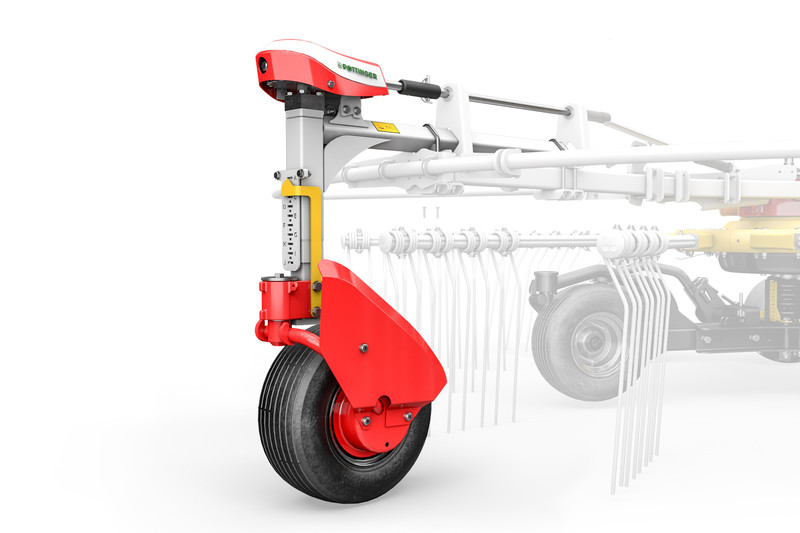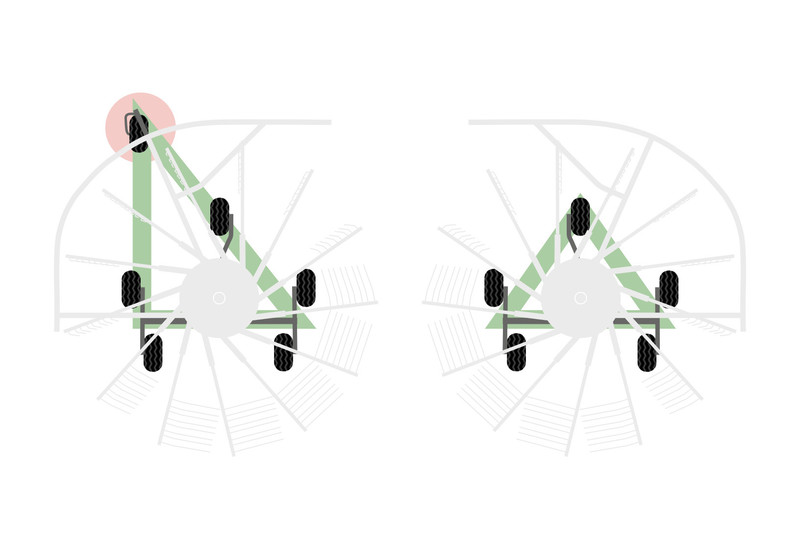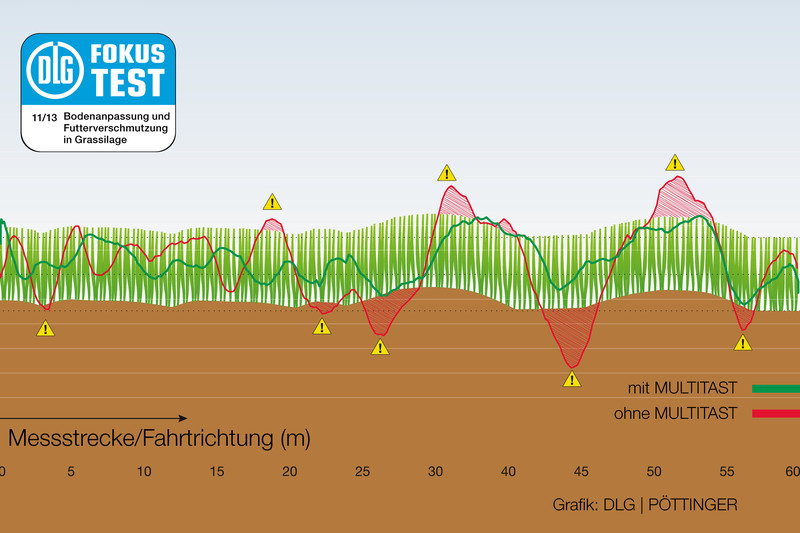MULTITAST jockey wheel
×
Always one wheel ahead with the PÖTTINGER MULTITAST jockey wheel system
From the point of view of the tines, the wheels on the rotor chassis inside the tine arc react to bumps in the ground too late. Due to the width of the tine array, the front wheel is located around three quarters of a metre behind the arc of the outermost tine.
The only thing that helps here is a jockey wheel running in front of the tines. The MULTITAST jockey wheel system from PÖTTINGER detects bumps in the ground ahead of the outermost tine and tilts the rotor upwards when there is an incline. On top of the bump, it guides the rotor downwards until the wheel inside the raking arc takes over. This always provides the ideal gap between the tines and the ground. Forage contamination and raking losses are clearly minimised as a result.

Larger support triangle for smoother running
The MULTITAST wheel also greatly increases the size of the rotor unit's support triangle. This makes the rotors run more smoothly and suppresses vibrations.

Less crude ash in the forage
During the test, dirt ingress was reduced by up to two thirds when raking with the MULTITAST jockey wheel system. For the given conditions, this meant a total of 23 g less crude ash per kg of dry matter.
Statements that stand out
Depending on the plant species, each plant has a certain amount of crude ash in the form of minerals and trace elements. In demanding conditions during trials, the unprocessed forage had a crude ash content of 90 g:
Raking without the MULTITAST jockey wheel system added a further 34 g in the form of sand and soil to the 90 g of crude ash:
Raking with the MULTITAST jockey wheel system added only 11 g. Ultimately, a good two thirds less.
Neat raking for successful harvesting
Clean forage makes all the difference because forage contamination has a doubly negative effect in terms of supplying nutrients to ruminants:
Lower forage value
Lower forage intake by the livestock
The increase in crude ash content inevitably results in diluting the nutrients. For every 10 g of crude ash, about 0.1 MJ of net energy content for lactation is lost in each kg of dry matter due to dirt ingress. The crude protein content decreases by around 1.6 g/kg DM.
In addition, contaminated forage is consumed by ruminants in smaller quantities. The reason for this is because it tastes different, and it is not as digestible.
As a rule of thumb: 10 g of dirt contamination results in 200 kg less milk from the basic ration per cow and lactation.